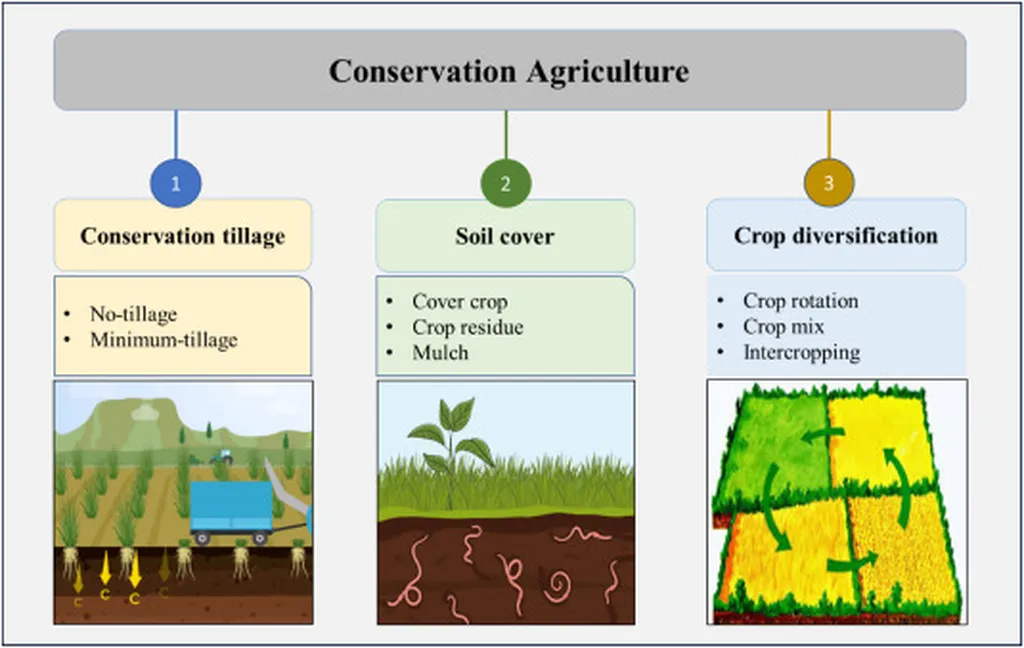In the face of escalating global food demand, climate change, and sustainability concerns, farmers and researchers are turning to conservation agriculture (CA) as a beacon of hope. A recent study published in *Regional Sustainability* and led by Subhashisa Praharaj of the Department of Agronomy at Bihar Agricultural University sheds light on the principles, benefits, and challenges of CA, offering a roadmap for its broader adoption.
CA is built on three core principles: minimum mechanical soil disturbance, permanent soil organic cover, and species diversification. These practices aim to create more resilient and efficient agricultural systems. Praharaj and his team delved into the mechanisms of CA, evaluating its impact on soil health, biodiversity, productivity, and ecosystem services. Their findings reveal that CA has the potential to significantly improve soil health and boost productivity across diverse regions, but its effectiveness varies depending on climate, soil type, and management practices.
“CA is not a one-size-fits-all solution,” Praharaj explains. “Its success hinges on tailored approaches that consider local environmental and socioeconomic factors.” This nuanced understanding is crucial for the widespread adoption of CA practices, as it allows farmers to adapt these methods to their specific needs.
The study highlights the importance of interdisciplinary research in refining CA practices. By integrating technologies and personalized adjustments, farmers can enhance the effectiveness of CA, ultimately leading to more sustainable and productive agricultural systems. This approach not only benefits individual farmers but also contributes to global food security and environmental sustainability.
The commercial impacts of CA are substantial. Improved soil health and increased productivity can lead to higher yields and better-quality crops, translating to greater profits for farmers. Additionally, the enhanced ecosystem services provided by CA, such as improved water retention and reduced erosion, can lower input costs and mitigate risks associated with climate change.
As the agricultural sector grapples with the challenges of feeding a growing population while minimizing environmental impact, CA offers a promising path forward. The insights from Praharaj’s study underscore the need for continued research and innovation in this field. By embracing CA and tailoring it to local contexts, farmers can contribute to a more sustainable and resilient global food system.
In the words of Praharaj, “The future of agriculture lies in our ability to adapt and innovate. CA is a powerful tool in this endeavor, and its potential is only beginning to be realized.” As the sector moves forward, the integration of CA practices, supported by robust research and technology, will be key to achieving sustainable food production on a global scale.

